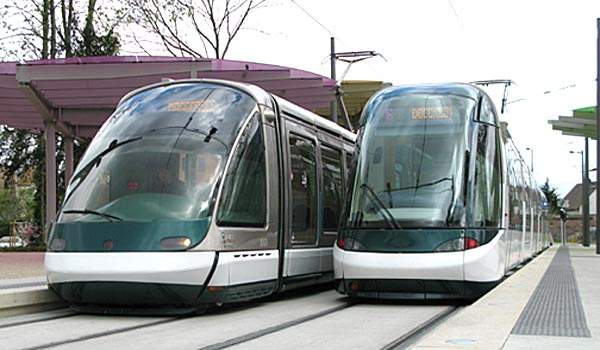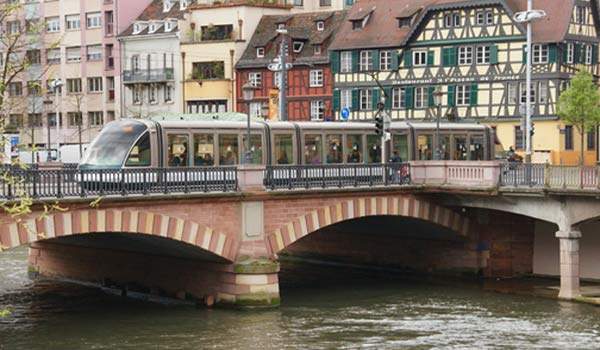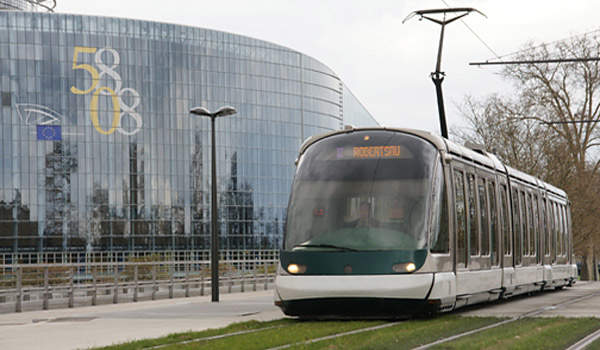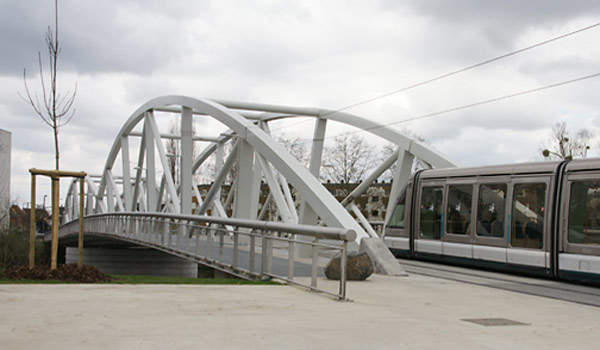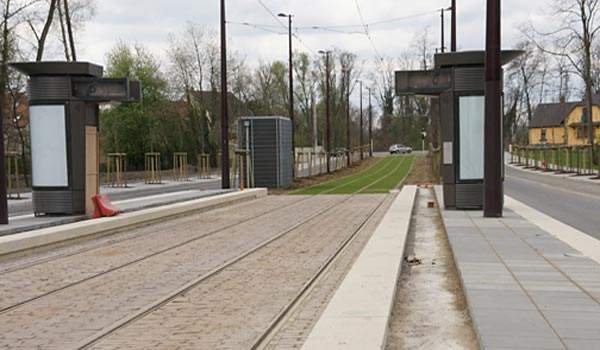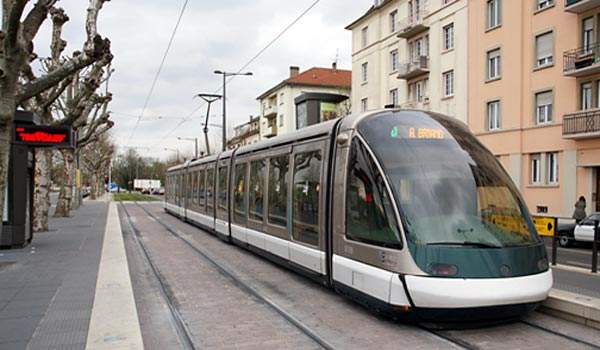As a major administrative centre of the European Community, Strasbourg in eastern France began moves early in 1989 to create a public transport system which would be appropriate to its position at the hub of the continent.
As well as its economic and administrative standing, Strasbourg has a large tourist trade based upon the historic core around the landmark cathedral, gastronomy and the picturesque waterways.
Although the city is only the country’s seventh largest, its light rail system is now France’s largest network and one of the most distinctive anywhere in the world. Since August 2007 the network has been made up of five routes. Colour-coded routes, designated A–E, all serve the busy centre, with some now reaching into semi-rural areas.
The project
Originating in 1887, the mixed private-public limited Compagnie de Transports Strasbourgeois (CTS) is responsible for city’s public transport. Much damaged during World War II, the original tram system was closed down by 1960. This first section of line for the modern system opened in November 1994, from Hautpierre-Maillon, in the north-west, via an underground section serving SNCF Gare Centrale, before turning south to terminate in the southern suburb of Baggersee.
As was to become a feature of later lines, this first one served points likely to gain from a high-capacity light rail service such as housing developments, hospitals, colleges/universities, shopping complexes and sports centres.
Success from the outset prompted pressure for network extensions and these were announced in 1995. First to be inaugurated was a 2.8km (1.8-mile) extension of the original line, now designated Line A, from Baggersee to Illkirch, including four intermediate stations.
Plans were also advanced for a second line. Intersecting Line A at Homme de Fer in the city centre, Line B opened in May 2000 and runs south-west to Elsau where a new tram and bus depot was built.
The system has 70 stations, one being underground (Gare Central) for which much-improved access has been created within the modern extension across the SNCF station’s façade, carried out in relation to the TGV Est opening in 2007.
Once fully commissioned, all lines operate from 04.30 (Sundays/holidays: 05.30) to 00.30. Lowest line frequency is 15min, with a standard frequency of 5–6min between 6:30am and 8pm, this halving in a large central area where two routes share all double track alignments.
Strasbourg’s tram and bus networks are run by Transdev, a 12.5% shareholder of CTS. As the tram system has grown, bus services have been revised for their feeder role and the two modes share a common ticketing system and are jointly promoted by CTS in terms of their coverage.
Infrastructure
Apparent with the first openings in the city centre, the network continues to be characterised by extensive reworking of space as it has extended in the suburbs and into other communities. The majority of the Strasbourg tram system runs on reserved trackbed, which varies between paved surfaces and neatly cut grass.
There is an overhead power supply at 750V DC. The 1,435mm gauge lines use steel rails held apart by steel tie-bars. The majority of the tram stops, apart from Gare Centrale, are simple waiting shelters with real-time digital information displays.
Costing €397.52m, the 2007–08 extension programme will add 22 stations and bring the total length of the system to 53.7km (33.5 miles). The programme has involved extending Line B by 5km with seven stops from Elsau to Ostwald Hôtel de Ville and Line C by 5km with eight stops from Esplanade to Neuhof Rodolfe Reuss.
The shortest line at 5.5km, D, increased by 1.8km with three new stops from Etoile-Polygone to a new terminus at Aristide Briand.
Part of the 2007–08 expansion programme and mainly using tracks of existing routes, Line E opened in two phases, the second in November 2007.
With a new 2km section between Wacken and the Robertsau Boecklin terminus to serve the cluster of European Community establishments in the north-east of the city, Line E is also notable as being the first not to pass through the system’s principal interchange at Homme de Fer.
Rolling stock
The 100% low-floor bi-directional CTS tram fleet is made up of two main types, Eurotram and Citadis. Strasbourg was the pioneer operator of the Adtranz (later Bombardier) Eurotram, subsequently classified as a Flexity Outlook. Totalling 53 units, these are in two variants, the initial 26 having seven modules (285 passengers/ 66 seated) and 18 of the 27 ordered in 1996 being for nine-module sets (370 passengers / 92 seated).
The striking design was considered extremely user-friendly by prevailing standards, including such innovations as a powered wheelchair ramp, wide internal gangways and ample room for wheelchairs and pushchairs.
To cope with service expansion, in 2003 CTS placed an initial order of just under €100m for 35 Citadis type 403 trams from Alstom, which was subsequently increased to 41. Entering service in 2005 and modified for Strasbourg conditions including the end bogies and to give continuity with Eurotram styling, the 45m, seven-module trams can accommodate 288 passengers with 64 seated.
Signalling and communications
The fleet includes automated train protection equipment, and the driver has full control of the extra equipment fitted, such as the wheelchair ramps, from the cab. Onboard visual and audio information is provided.
A fully automated interlocking signalling system allows for the short headways between services, especially on the slower-speed sections through the city centre like those converging on the key interchanges at Homme de Fer and République.
As well as impressive service frequency, the multiple ticketing options including the BADGEO smart card, low fare levels and nine park-and-ride sites are all aimed at discouraging private vehicle use within the city.
The future
Completing the 2007–08 expansion programme, in summer 2008 a three-station extension of Line B is due to open from Ostwald Hôtel de Ville to Lingolsheim Tiergaertel.
Other system expansions under consideration include extensions of some of the current lines. One such would make the system international with a Rhine crossing to Kehl, Germany, currently served by 15min interval CTS bus route from the present Line D terminus of Aristide Briand.
In the early stages of development is a tram-train project to bring local rail services onto the system via a new 1.5km link, but this is subject to many investigations.


